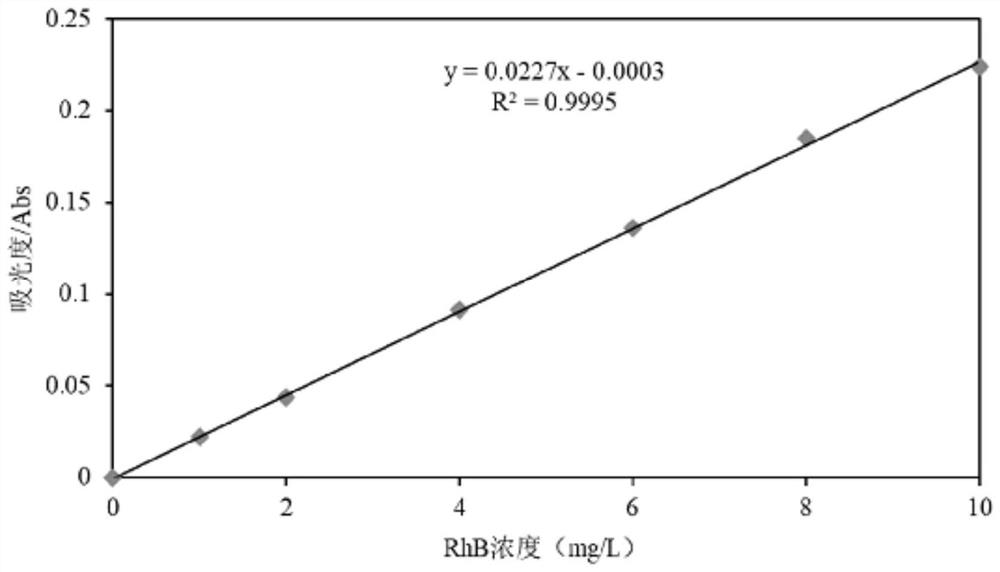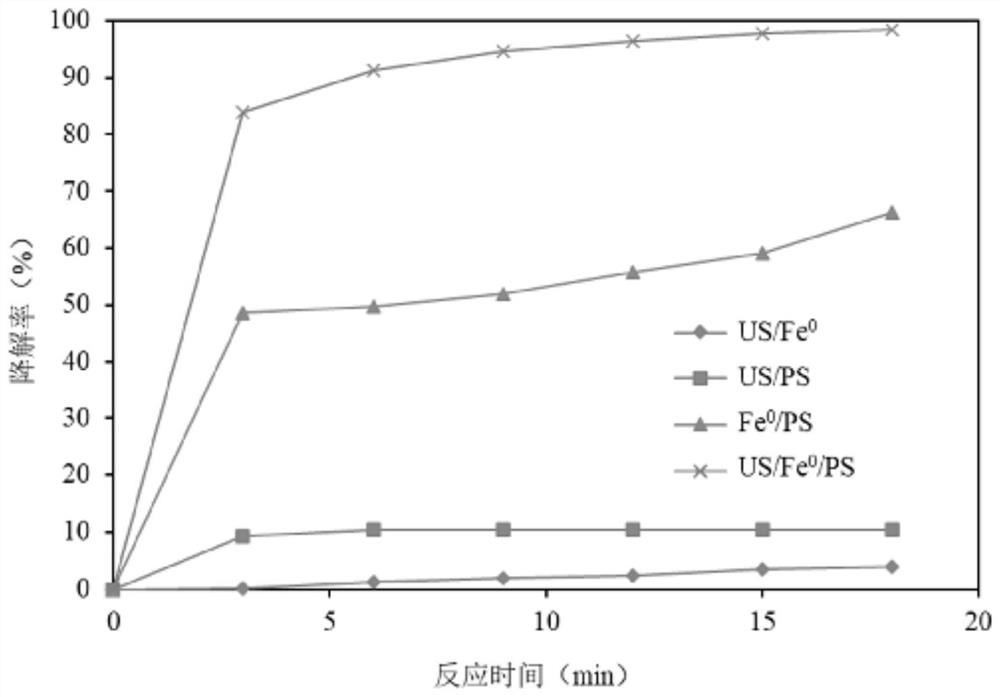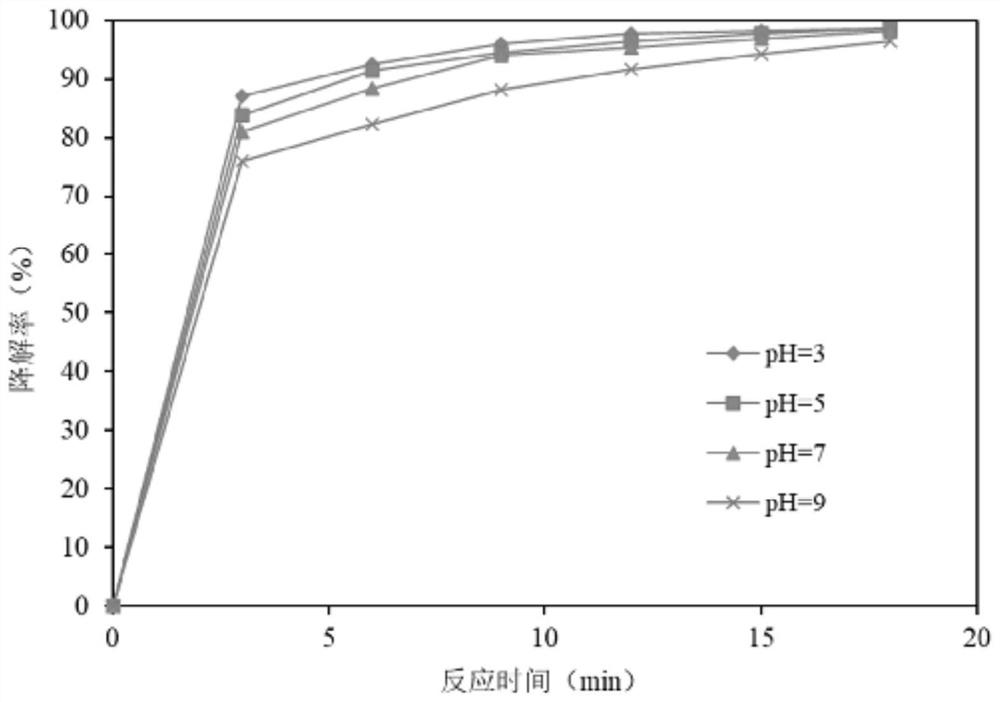Method for catalytically degrading organic pollutants by zero-valent iron
A catalytic degradation, zero-valent iron technology, applied in water pollutants, chemical instruments and methods, oxidized water/sewage treatment, etc. effect of effect
- Summary
- Abstract
- Description
- Claims
- Application Information
AI Technical Summary
Problems solved by technology
Method used
Image
Examples
Embodiment Construction
[0040] A method for catalytically degrading organic wastewater using zero-valent iron, comprising:
[0041] 1) Add iron powder and persulfate to organic wastewater for ultrasonic treatment;
[0042] 2) After the reaction is complete, the treated organic wastewater is obtained.
[0043] In some examples, the added amount of the iron powder is not less than 0.1 mg / L.
[0044] In some examples, the iron powder is added in an amount of 0.1-0.5 mg / L. When the amount of iron powder added exceeds a certain limit, it will not bring more positive effects to the progress of the reaction. The amount of iron powder added also has a certain relationship with the particle size of iron powder. The particle size of iron powder is small, and the amount of iron powder added can be relatively reduced; on the contrary, the amount of iron powder added should be increased accordingly.
[0045] In some examples, the particle size of the iron powder is not greater than 1 mm. The finer the particle...
PUM
| Property | Measurement | Unit |
|---|---|---|
| particle diameter | aaaaa | aaaaa |
Abstract
Description
Claims
Application Information
 Login to View More
Login to View More - R&D
- Intellectual Property
- Life Sciences
- Materials
- Tech Scout
- Unparalleled Data Quality
- Higher Quality Content
- 60% Fewer Hallucinations
Browse by: Latest US Patents, China's latest patents, Technical Efficacy Thesaurus, Application Domain, Technology Topic, Popular Technical Reports.
© 2025 PatSnap. All rights reserved.Legal|Privacy policy|Modern Slavery Act Transparency Statement|Sitemap|About US| Contact US: help@patsnap.com



